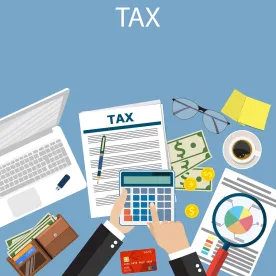The Department of the Treasury and IRS provided two New Year’s Eve presents to the tax-exempt bond community. One was the finalization of the public notice regulations, and the second was the issuance of the proposed reissuance regulations, both of which have been long promised, and both of which were published in the Federal Register on Dec. 31, 2018. This GT Alert addresses the proposed reissuance regulations.
The Proposed Reissuance Regulations
The Treasury and IRS published proposed regulations (the Proposed Regulations) under §§150 and 1001 of the Internal Revenue Code of 1986, as amended (the Code), proposing rules for when bonds are deemed retired and reissued. These regulations generally follow existing guidance with some technical changes.
Background
Thirty years ago, on Dec. 27, 1988, Notice 88-130 was published, providing rules for when a tax-exempt bond is deemed retired and reissued for purposes of §§103 and 141 through 150 of the Code and providing special rules for “qualified tender bonds.” Thereafter, in 1996, the Treasury and IRS published regulations under Code §1001, addressing what modifications to debt instruments, including tax-exempt bonds, would result in a retirement of such instrument, and indicating that they intended to issue regulations under Code §150 for tax-exempt bonds. While no regulations were then forthcoming, the Treasury and IRS issued Notice 2008-41, which set forth rules for determining when a tax-exempt bond was retired for the tax-exempt bond rules, providing special rules, again, for qualified tender bonds, providing certain flexibility in light of the financial crisis occurring at that time, and restating the intent to publish regulations under Code §150.
Events That Cause Retirement of a Tax-Exempt Bond
The Proposed Regulations generally follow Notice 2008-41, with some technical changes. The Proposed Regulations provide that, in general, a tax-exempt bond is retired if a significant modification to the terms of the bond occurs under Treasury Regulations §1.1001-3, if the issuer (or related party under Treasury Regulations §1.150-1(b)) or an agent acting on the issuer’s behalf acquires the bond in a manner that liquidates or extinguishes the bondholder’s investment in the bond, or if the bond is otherwise redeemed.
When Does a Retirement and Reissuance Occur?
If the bond is retired pursuant to a deemed exchange under Treasury Regulations §1.1001-3, the bond is treated as re-issued at the time of the modification. If the bond is treated as retired because of the acquisition of the bond by the issuer (or related party), the bond is treated as reissued at the time the issuer resells the bond. If the bond is retired, the issuer should apply the definition of refunding under Treasury Regulations §1.150-1(d) to determine whether the bonds that are modified or resold, as applicable, are refunding bonds.
Three Exceptions to the General Retirement Rules
There are three exceptions to the general retirement rules, two for tender option bonds, defined similarly to qualified tender bonds in Notice 2008-41, and one for all tax-exempt bonds. For tender option bonds, the existence and exercise of a qualified tender right is disregarded for purposes of determining whether a significant modification has occurred under Treasury Regulations §1.1001-3. Also for qualified tender bonds, the acquisition of such bond by the issuer or its agent pursuant to the operation of a qualified tender right will not result in a retirement of the bond, provided that neither the issuer nor its agent holds the bond for longer than 90 days from the date of tender. The exception for all tax-exempt bonds provides that the acquisition of the bond by a guarantor or liquidity facility provider acting on the issuer’s behalf (but unrelated to the issuer) does not result in a retirement of the bond, if such acquisition is pursuant to the terms of the guarantee or liquidity feature.
Differences Between the Proposed Regulations and Notice 2008-41
Certain provisions in Notice 2008-41 do not appear in the Proposed Regulations. While no explanation for these omissions is offered in the preamble to the Proposed Regulations, some deletions appear to have been made because the provisions applied only for a temporary period that has expired, and some others appear to have been made because they were outdated by later issued regulations. The rationale for other changes, highlighted below, is not so apparent.
-
Notice 2008-41 provided that qualified tender bonds converting to a fixed rate could be remarketed to maturity at a market premium or market discount. The Proposed Regulations appear to require that the bonds be resold at par.
-
Notice 2008-41 provided a special rule regarding when a reissuance occurs for nonrecourse debt that does not appear in the Proposed Regulations, which seem to require issuers to apply the normal rules under Treasury Regulations §1.1001-3. The rule in Notice 2008-41 was described as temporary but had no specified termination date.
-
Notice 2008-41 included a special rule for program investments under Treasury Regulations §1.148-1(b). Under this rule, purchases of bonds by conduit borrowers of program investments to facilitate liquidity during adverse market conditions were specifically not treated as “related” to the amount of the purpose investment financed by the program. The Proposed Regulations do not include this special rule.
-
Notice 2008-41 included several examples that are not in the Proposed Regulations.
Changes to Treasury Regulations §1.1001-3
Changes are proposed to be made to Treasury Regulations §1.1001-3 to coordinate those rules with the new proposed regulations. In particular, the regulations are proposed to cross-reference the proposed regulations under Code §150 for special rules for qualified tender bonds.
Proposed Effective Date
The Proposed Regulations are proposed to apply to events and actions that occur on or after the date that is 90 days after publication of the final regulations. Issuers, however, may apply the Proposed Regulations to events and actions taken with respect to bonds that occur before that date. The Effective Date provisions are unclear on whether an issuer may apply the proposed changes to Treasury Regulations §1.1001-3 retroactively. Current Treasury Regulations §1.1001-3, however, exclude qualified tender bonds from their application for purposes of Code §§103 and 141 through 150. It is anticipated that the final regulations will obsolete Notice 88-130 and Notice 2008-41. Comments on the Proposed Regulations are due no later than March 1, 2019.





 />i
/>i

